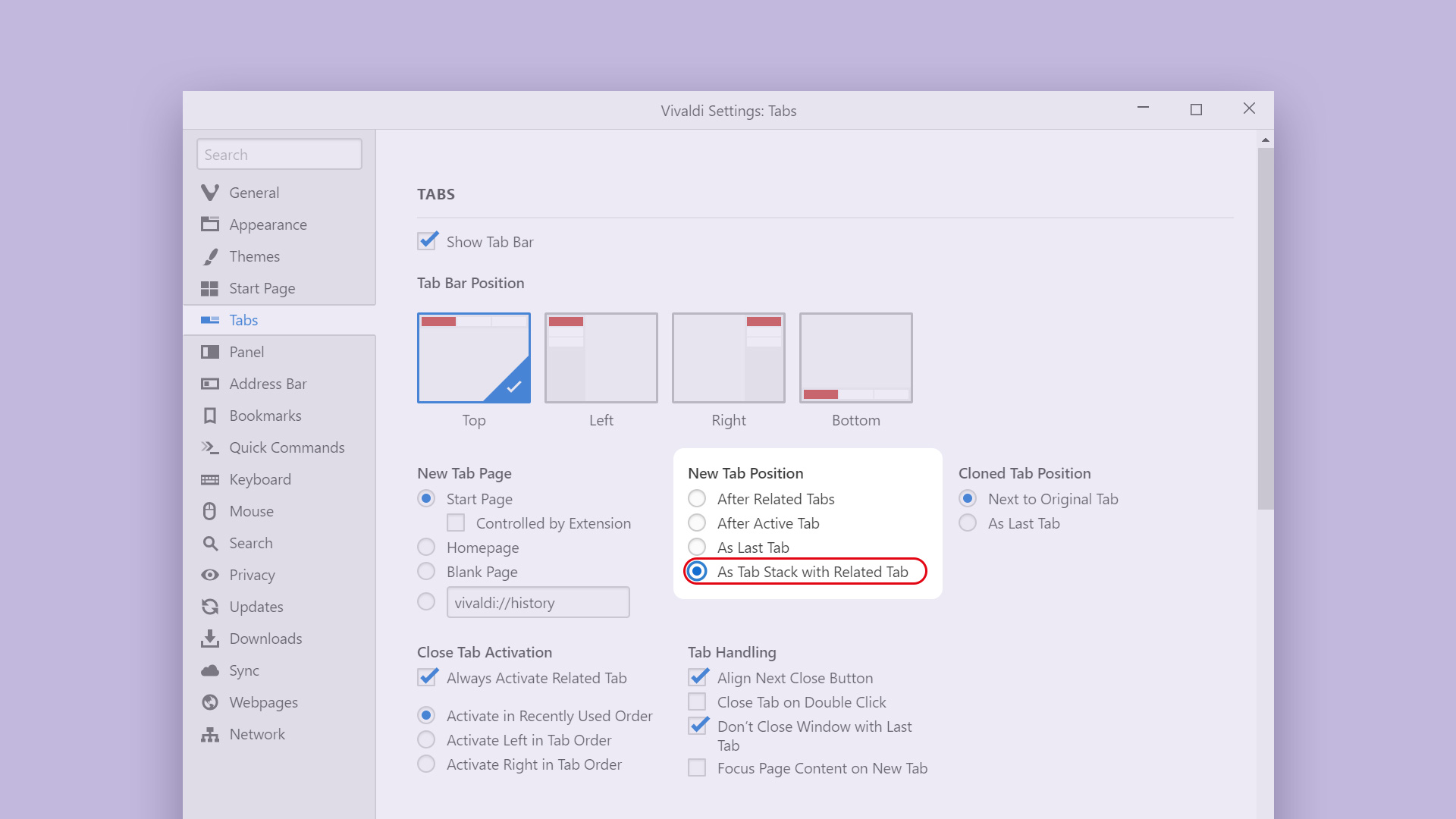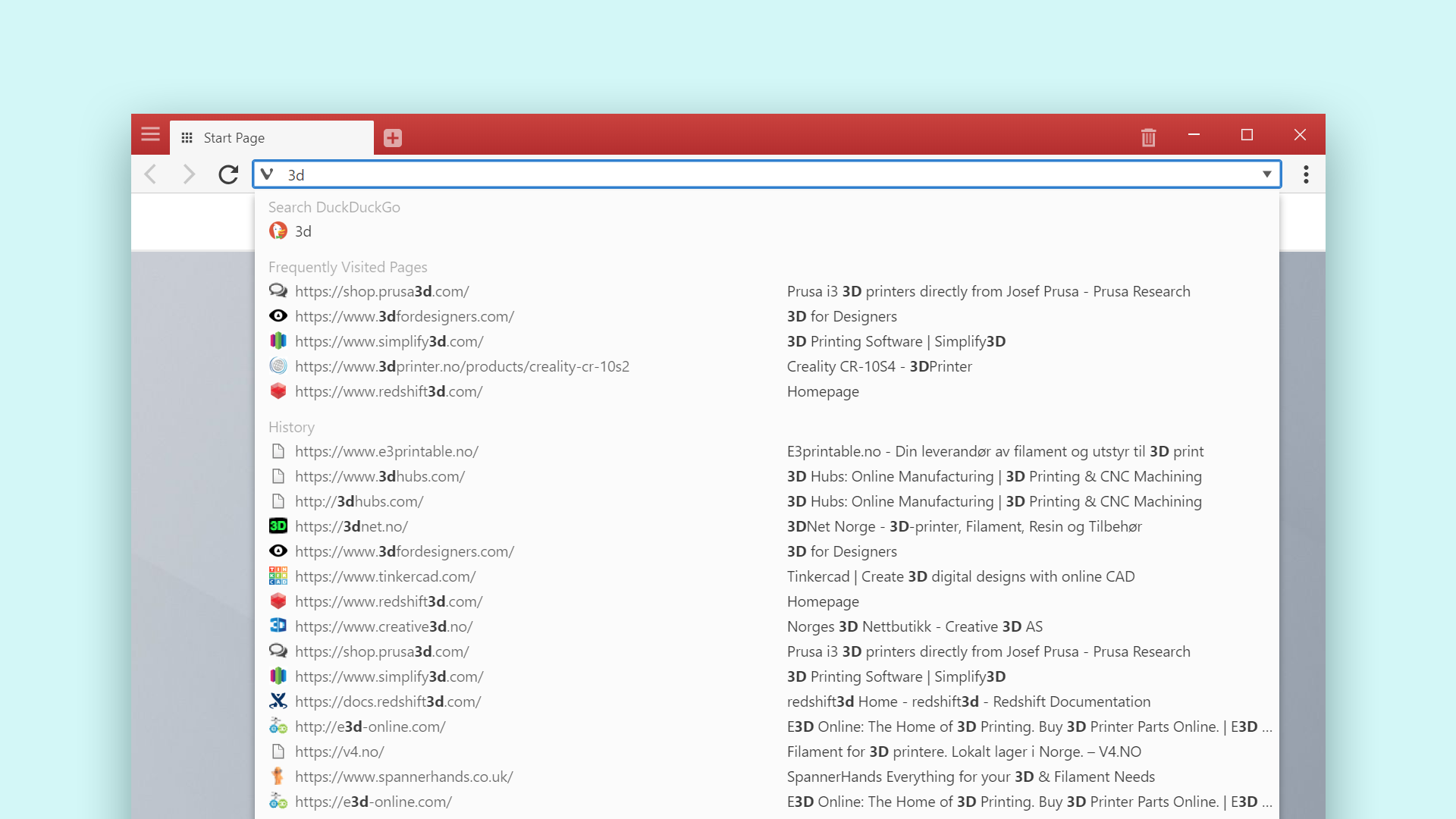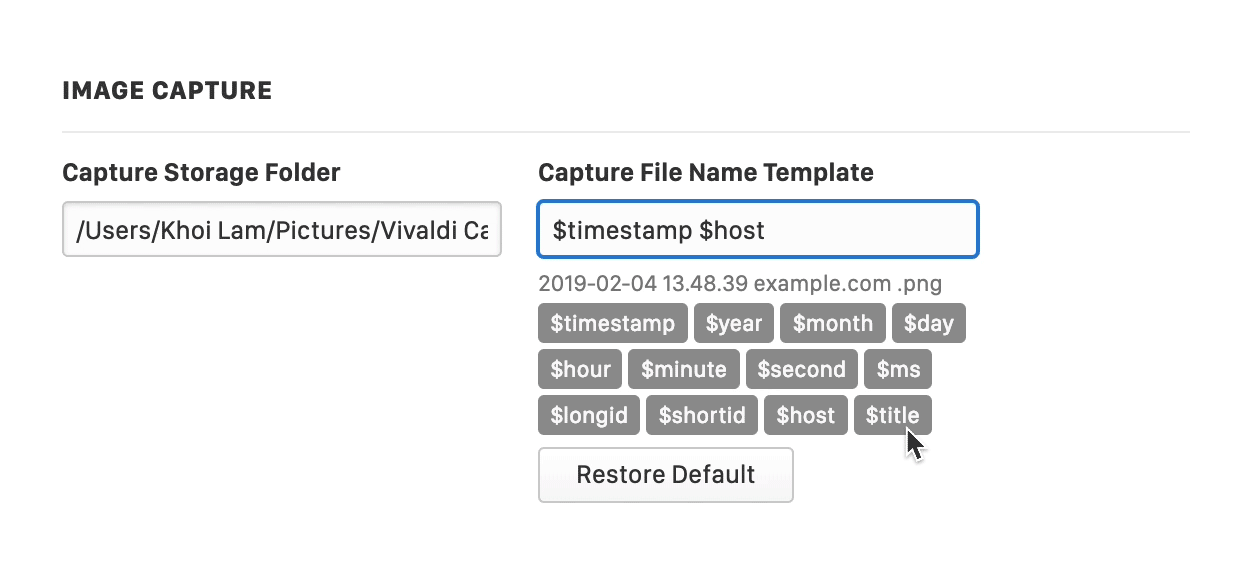
OSLO, Norway – 6th Feb 2019: Today, the Vivaldi browser launches its first update of the year – Vivaldi 2.3 – introducing auto-stacking of tabs. The update also adds new ways to access websites in the Address Field and overall improvements to help users navigate and interact with the Web quicker.
According to Ars Technica, “The prevailing wisdom of the moment is that Web browsers should be like children of the Victorian Age: seen and not heard. Or, maybe more specifically in the case of browsers, neither seen nor heard.
Fortunately for those of us who would like something different, something we can bend to our will rather than the other way around, there is an alternative. It’s called Vivaldi.”
Auto-Stack Related Tabs into a Tab Stack
When it comes to managing tabs, Vivaldi’s Tab Stacking stands out. It enables users to collect a group of tabs by dragging one tab over another. It’s a great way to keep the browser window tidy and avoids the need to hunt through dozens of tiny tab titles to find the one required.
Users, depending on their workflow, can create several Tabs Stacks and give each of them a name to identify them more easily, rather than relying on a small thumbnail image. Users can also pin, drag, hibernate and mute tabs as needed.
Vivaldi 2.3 introduces an intriguing way to ‘auto-stack’ related tabs into a Tab Stack.
This feature can be enabled in Settings > Tabs > New Tab Position > Select “As Tab Stack With Related Tabs”.

With this setting enabled, when a link is opened from the active tab, it is added to a Tab Stack. This automated way to stack tabs will help users to keep their workflow even more organized.
“Vivaldi’s Tab Management is unique. No other browser gives users a variety of ways to manage their tabs. Auto-stacking of tabs is a fine example of how users can streamline an extraordinary amount of information while browsing the Web”, says Vivaldi CEO Jon von Tetzchner. “Our innovation comes from the trust users put on us. They deserve it.”
Addressing the Address Field
Vivaldi approaches the Address Field differently from other browsers where the list of sites and searches shown in the drop-down are often obscured with no context.
In Vivaldi, users can decide what they want to see in this drop-down – they can mix and match what types of results are shown to fit their workflow and unique setup.
Vivaldi’s Address Field gives users fine-grained control on how to get around the Web quicker with the help of the following categories in the drop-down such as Bookmarks, Typed History and Browsing History.
In this update, users can now find Frequently Visited Pages – the pages they have visited most – in the drop-down. These site suggestions are based on the user’s browsing habits and are also shown in other unique features of Vivaldi, like Web Panels and Speed Dial.
Off by default, this option can be enabled in the Settings. Simply go to “Settings → Address bar → Address Field Drop-Down Menu → Include Frequently Visited Pages”.

Search Suggestions also finds sites, but in this case, what is typed is sent to the preferred engine of the users. Often overlooked as a privacy issue, Vivaldi handles this uniquely – search suggestions are turned off by default and can be enabled per search engine.
Keep screenshots organised
Vivaldi’s built-in Capture tool lets users capture any part of the Web in a screenshot. Images can either be copied to your clipboard or saved to the computer.
Now, finding and sharing a specific screenshot is even quicker and more organised with the new default naming. Plus, a user can pick and choose a preferred pattern/ format in the Settings → Webpages → Image Capture → Capture File Name Template..
